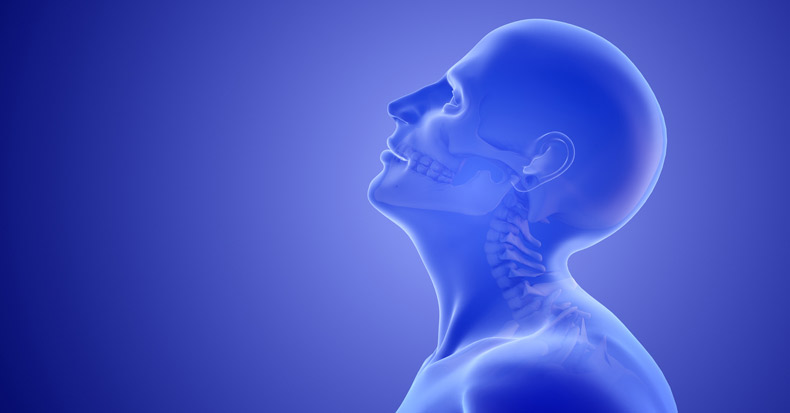The facet joints are located in the posterior (back) part of the vertebrae and are typically symmetrical, with four per vertebra—a left and right superior facet and an inferior facet set. The superior and inferior facets articulate with the corresponding facets of the adjacent vertebrae, contributing to spinal stability, mechanical load distribution, and controlled movement. The rapid acceleration-deceleration mechanism of a whiplash injury can overstretch the muscles, ligaments, and synovial capsules surrounding the facet joints, and since these structures are highly pain-sensitive, facet joint damage can result in various pain presentations.
The most common pain pattern for facet joint injuries involves localized pain and stiffness at the site of inflammation, often exacerbated by neck movements such as looking over the shoulder. Patients may also experience referred pain to the shoulder blade region in the mid-back. If the injury irritates nearby spinal nerves, the patient may also report numbness, tingling, or radiating pain extending into the shoulder, arm, and hand on the affected side.
During the examination, a chiropractor will assess pain response to movement, particularly if pain worsens with extension (bending backward) and rotation, range of motion limitations and whether movement reproduces symptoms, and localized tenderness or joint stiffness upon palpation. They will also perform orthopedic and neurological tests to provoke facet joint pain, rule out nerve root involvement, and to differentiate facet joint dysfunction from other potential causes of pain, such as disk herniation, muscle strain, or spinal stenosis. If necessary, X-rays may be taken to rule out fractures or other red flags that would contraindicate chiropractic treatment, such as severe degenerative changes or spinal instability.
Like other joints in the body, the facet joints can wear down over time, leading to degenerative joint disease (DJD) or osteoarthritis, which are very common in older adults. However, facet joint injuries sustained earlier in life (such as from a car accident) can accelerate degenerative changes, leading to early-onset DJD or osteoarthritis. This underscores the importance of timely and appropriate care during the acute injury phase to reduce long-term complications.
Chiropractors utilize a multimodal approach to managing whiplash-associated disorder (WAD) and facet joint dysfunction, incorporating manual therapy (spinal adjustments, mobilization techniques); therapeutic exercises to restore mobility and strength; general fitness guidance to improve posture and spinal health; in-office physiotherapy modalities (e.g., ultrasound, electrical stimulation); anti-inflammatory strategies, including ice therapy and nutritional support; and more. In complex cases, co-management with the patient’s primary care physician or a specialist may be necessary to achieve the best possible outcome.
